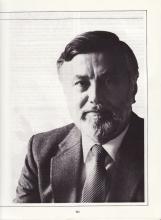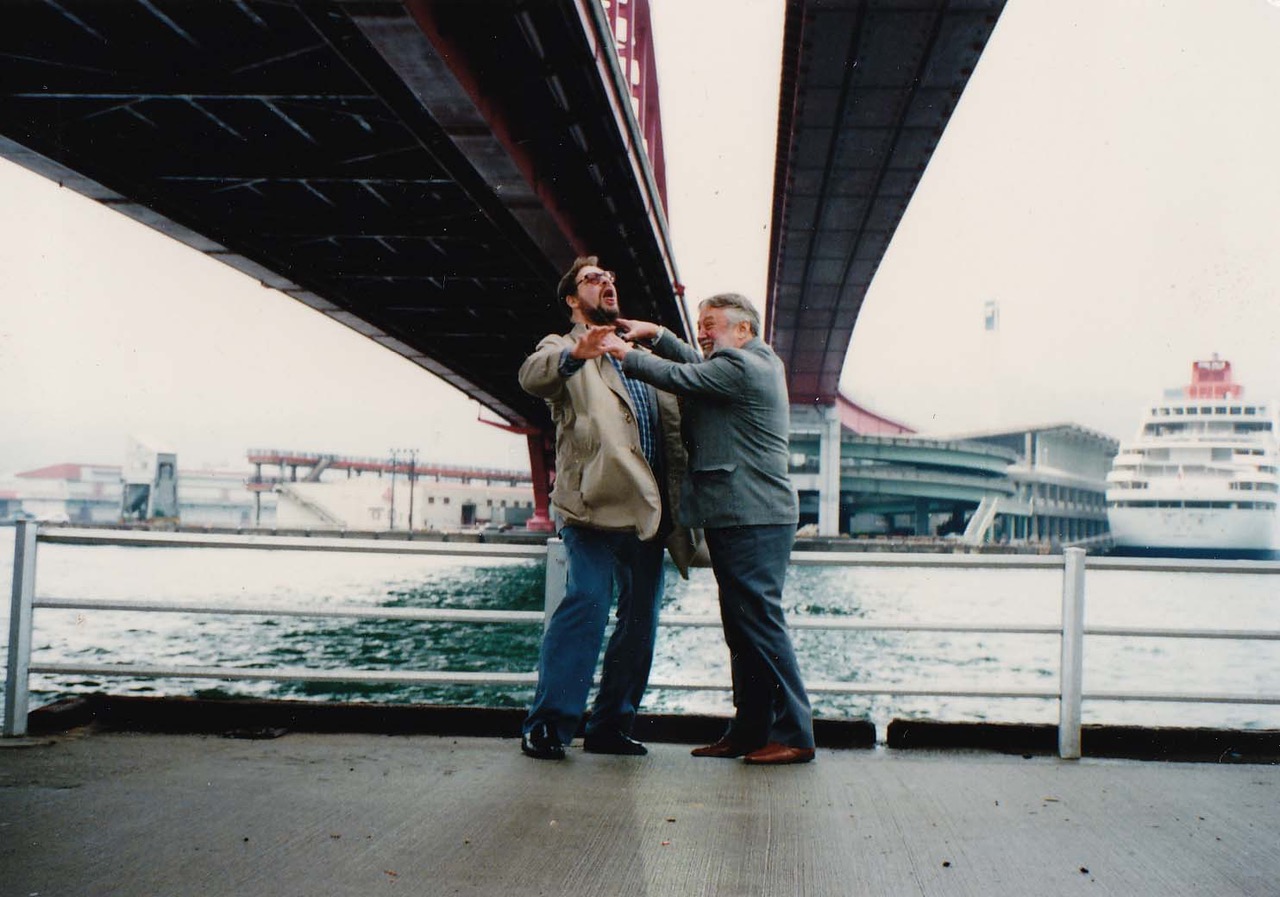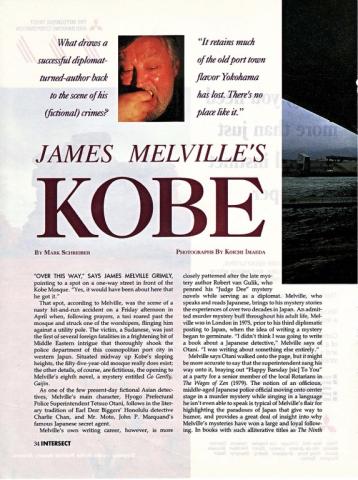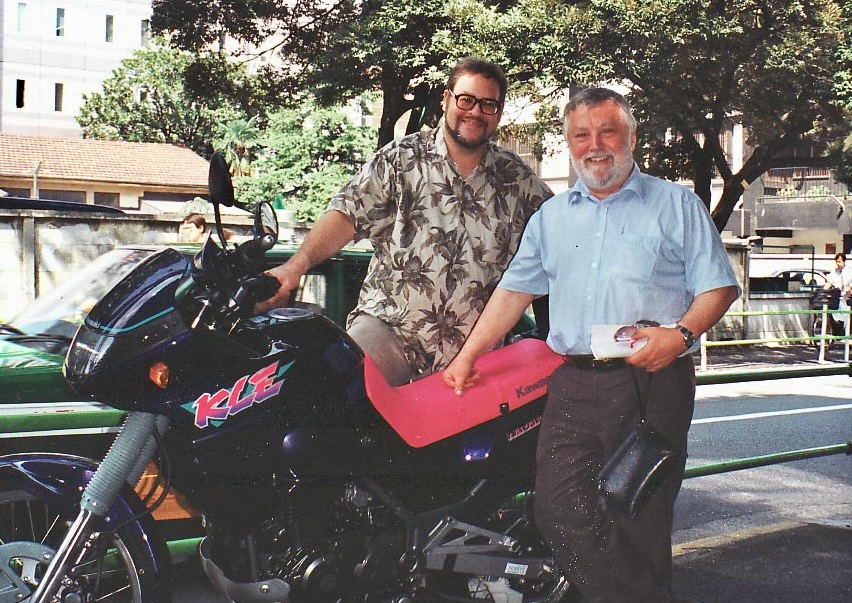Issue:
October 2025
Under the pen name James Melville, Peter Martin drew on true crime and western Japan for his series of mystery novels
This is the second installment of a two-part series about diplomats who turned to crime writing

Mystery author Peter Martin (1931-2014) was born in London to a working-class background - his father was a greengrocer and his mother, a dressmaker. After graduating from the University of London in 1953 with a bachelor's degree in philosophy and completing his national service, Martin took a position in 1960 with the British Council, working in the area of cultural diplomacy. Following an initial three-year assignment in Indonesia, Martin began the first of two tours in Japan, when he was appointed director of the British Cultural Institute in Kyoto in 1963.
As the only "official" British figure in Kyoto at the time, one of Martin's regular duties was to escort visiting British royalty, politicians and other dignitaries around Japan's ancient capital.
Over a beer and yakitori, Martin once related a story to me about one such experience, when the commander of the British military garrison at Singapore paid him a visit.
While dressed in civilian clothes, the ramrod-straight general, sporting a luxuriant moustache, informed Martin, "While in Kyoto, I was told that I should see a temple, a shrine, and a garden."
"So off we went, to our first destination," Martin recalled. "Upon exiting, he turned to me and asked, 'Which one was that?'"
During his tenure, Martin found the time to learn Japanese, open a new cultural center, supervise the British Pavilion at Expo 70 in Osaka and be awarded an MBE.
After a hiatus in London of several years in the mid-1970s, Martin returned to Japan in 1979 to serve as a cultural counselor with the British embassy in Tokyo. The same year, he published The Wages of Zen, the first of his Superintendent Otani mysteries, under the nom de plume James Melville. He took the name from the names of his sons, James Peter Martin and Adam Melville Martin.
Although it appeared as the second in the Otani series, The Chrysanthemum Chain (1980) was actually Martin's first attempt at fiction. That book was inspired by the murder of an American in Kyoto in 1966, and among its dramatis personae was a young British diplomat named Andrew Walker, who is said to have been modeled to some degree on Martin himself – the only one of his books with what could be described as an autobiographical component.
"The Chrysanthemum Chain is very loosely based on the real-life murder of an American," Martin explained. "I wasn't involved, except very indirectly, because this man used to let it be thought that he was British, and had a very British style. He never actually went about saying he was British, but when people assumed he was, he didn't correct them.
"And so when he was killed, I was in a position where a newspaper called me up and said, 'How well do you know this Mr. X?' and since Mr. X was a well-known homosexual I said, 'Well come on, now!' I'd met him, you know, and they said, 'We want an official statement from you. He's just been murdered!' And I said, 'Well, you want one, but you're not going to get one from me. He's not even a British subject.'"
In the story, the police were able to track down the killer by going through the victim's collection of index cards, drawing attention to a network of gay men, the so-called "Chrysanthemum Chain".
Martin would go on to produce 13 Otani novels in total, many recognizable by memorably alliterative titles such as The Ninth Netsuke (1982), The Reluctant Ronin (1988) and The Bogus Buddha (1990).
He reflected on some of his challenges when writing books about Japan for a publisher in the UK.
"One thing that does amuse my editor in London is that whenever he challenges me over some really crazy idea – at least he thinks it is – then I can almost always send him a newspaper clipping to show that is exactly what happened.
"I keep a clipping file, mostly out of the Mainichi Daily News, which carries a lot of Kansai news. One particular thing which I've put to use already is that a bunch of yakuza [gangsters] hire a ferry and go on a cruise around the Inland Sea. And my editor said, 'Oh, come on.' And this was true; it actually happened. They had a conference on board this ship; it was a top-level yakuza kind of summit meeting, which actually happened.
"In the same book, the gang's oyabun (godfather), Yamamoto, dies. When I described the scene of people going to pay their respects, my editor challenged that this would really happen so openly. Again, I showed him a view taken from a police helicopter, when [third-generation head of the Yamaguchigumi] Kazuo Taoka (1913-1981), died, of these queues of people going up Tor Road, all around the block and everything. And he had to write back again and say, 'You win.'
"I keep a tremendous concertina file at home in which I try to save anything and everything. About once a month I turn out this thing, shake the contents all out on the floor and go through it. It's a very useful exercise."
Martin agreed with my observation that there was very little physical action or violence in his stories.

"I personally shrink from violence, and I always shut my eyes to the violence portrayed in some movies – I can't bear it. I suppose, like many another crime writer, I don't really like to think about what actually happens to people in jail, how unpleasant it really is. Also, you will notice that my victims tend to be 'expendable'; you don't miss them too badly. But I've just been rereading Raymond Chandler's Farewell, My Lovely, and this poor guy's getting sapped on the head every fifteen minutes in this book, and you know it's so unbelievable, so ridiculous – it's like a Tom and Jerry cartoon.
"It doesn't bother one, because it's so unbelievable. I don't mind that kind of thing, any more than I mind seeing Tom going off on a rocket. But what I dislike is realistic, believable mayhem; this is a real turnoff to me. I think I'm never going to be able to write convincingly about violence."
To give his stories an air of authenticity, Martin read textbooks on the Japanese legal system and police organization.
"But it wasn't until somewhat later that I had ever set foot in a Japanese police station," he recalled. "And I was immensely relieved to discover that nature followed art, and that the sort of place I had visualized was very much what I found. The only thing I hadn't visualized was all these characters wandering around in the station, still with their belts and pistols on, but wearing these floppy slippers! (He laughed.) That's the sort of thing I've been saying about these incredible contrasts in Japan; they take off their shoes, but not their guns! And the fact that it was tacky and messy and so forth, not modern and automated."
Another decade would pass before Martin sat down with a Japanese policeman and talked about his job. This happened while on a visit to Kobe in 1990, when Martin was introduced to Takaji Kunimatsu, who at that time headed the Hyogo Prefectural Police. In preparation for their meeting at the historic Kobe Club, Kunimatsu, a fluent English speaker, went so far as to read several of Martin's novels.
Kunimatsu, by the way, would go on to head the National Police Agency. On 30 March 1995 – 10 days after the nerve gas attack on the Tokyo subways by the AUM religious cult – the nation received a further shock when Kunimatsu was shot and seriously wounded in an assassination attempt outside his home.

Invited to offer some practical advice for aspiring young writers with the dream of writing fiction set in the Far East, Martin gave me an earful.
"What I would try to avoid at all costs," he began, "is the 'Mystic Orient' syndrome, where everything is just so weird it is totally incomprehensible. One's got to accept the fact that there are a lot of things that go on here and throughout the Orient which are entirely familiar and humdrum, and it's that which sets this off which makes such a dramatic contrast.
"As far as making your background credible … the safest thing is to write about what you know. The only reason I presume to write about Japan is that I've been knocking around Japan for twenty years. But that doesn't mean I know everything. But still, I can imagine how wrong I am by imagining a Japanese who's been living in Britain for a long time suddenly writing books about an English policeman.
"With that having been said, I'm convinced that the sort of book which emerges when someone has been on a short trip to get some background for two or three months and then goes back and writes a book about it, either degenerates into a meaningless pictorial guide out of a travel book or else it's literally incredible. I think one has to make one's background credible by not selecting all the odd things and all the exotic things you can think of, but by trying to present a judicious mixture, because it's the mixture that's interesting, by the jolts from one cultural background into another.

Martin remarked how he was "constantly struck by the collision between the very ordinary and familiar in the Tokyo area, all mixed up together."
"While it is very much a secondary intention, if, as some critics have suggested, my books do convey something of the flavor of contemporary Japan, then I'm very pleased – although that's not why I'm doing it. I write with no didactic purpose whatsoever. If my books occupy someone for a couple of hours on a train or plane, I'm happy; that's why I'm doing it.
"But now, certainly these half-dozen characters who recur in all of the books have become friends of mine, and to some extent it constitutes a problem in writing a new book, because the temptation is to write about how they would react if such and such were to happen, and that is the beginning of the story. That I think leads to an excessive characterization of the story at the expense of plot, and I'm conscious of the fact that my plots are not very tight, not very neat, they're not classic puzzlers. I think I am more interested in the characterizations, and in the descriptions and moods of the stories."
Upon ending his second Japan posting in 1983, Martin returned to England and dedicated himself full time to writing. In addition to the Otani series, Martin published two historical novels set in Japan: The Imperial Way (1986), centered around the failed 1936 coup attempt by a radical faction of the Imperial Japanese Army. A Tarnished Phoenix (1990) took place in Tokyo during the postwar occupation. In 1997 he also published, under his own name, The Chrysanthemum Throne: A History of the Emperors of Japan.
This article was sourced from personal conversations, mail correspondence and interviews that appeared in The Armchair Detective and PHP Intersect magazines.
This year Mark Schreiber celebrates his 60th year in Asia. He is currently working on an essay about Japanese weekly magazines that will appear in an anthology about Japan's mass media.

